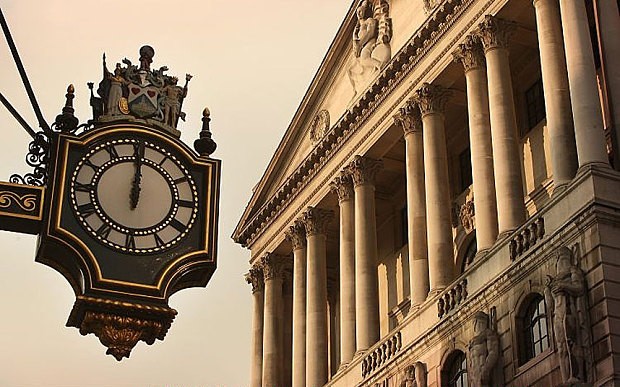When Interest Rates Rise Which Assets Go Up And Which Go Down
Post on: 16 Март, 2015 No Comment

Take a look at different asset classes during periods of higher interest rates.
In 2012, I wrote a number of articles that laid out the hypothesis that interest rates were headed considerably higher. On July 25, 2012, US Treasury interest rates hit all-time lows. Since then, interest rates have been marching upwards. This article will examine a variety of assets during periods of rising interest rates to see which assets go up and which assets go down.
Bond yields put in a major peak in 1814. From 1814 to 1946, bond yields dropped in a 132-year super secular bond bull market. Within the context of this super secular bull, there were a number of cyclical bond bear markets when interest rates went up a good deal:
1824 to 1842 (18 years)
1853 to 1861 (8 years)
1899 to 1920 (21 years)
Then there was the great bond bear market:
1946 to 1981 (35 years)
From 1981 to 2012, we have been in the greatest bond bull market in history. Interest rates for US Treasuries hit their all-time high in 1981 and their all-time low six months ago. While interest rates for corporate bonds haven’t quiet reached their 1940s lows, they are getting close. Corporate bond yields were much higher in 1981/1982 than at any time in history thus making the recent/current bull market the all-time greatest for corporates as well.
Within the confines of the greatest bond bull market in history, there were still periods when interest rates went up. Let’s look at the 30-year bond bull market:
As you can see, we have had six occasions when bond yields increased by a third and another instance when bond yields went up by 20.8%.
There are a number of ways to backtest what goes up/down in a rising interest rate environment. Before we leap to conclusions and start talking about secular bond bear markets or even an eight- to 21-year cyclical bond bear market in a secular bull, let’s start at the most conservative assumption that, at the very least, we are having a normal snapback to a bit above the regression line of the bond bull market. Therefore, this article will focus on the seven periods of rising interest rates within the 1981-2012(?) bull market.
Here are the numbers:
The first column calculates the annualized returns of the aforementioned asset classes over the following time periods of rising interest rates (which total 2,712 days):
May 4, 1983 to May 30, 1984 (392 days)
July 15, 1986 to October 19, 1987 (461 days)
October 15, 1993 to November 7, 1994 (388 days)
December 29, 1995 to July 8, 1996 (192 days)
October 5, 1998 to January 18, 2000 (470 days)
June 13, 2003 to May 13, 2004 (335 days)
December 18, 2008 to April 6, 2010 (474 days)
The second column is simply the annualized returns of the asset classes over the entire time period (both 8,518 days of interest rates going down and 2,712 days of interest rates going up). This allows for a baseline number for comparative purposes.
The third column is the difference between the two columns. As you can see, the top six performing asset classes when interest rates go up all obtained a significant amount of their performance in a rising interest rate environment.
The stock numbers do not included dividends. So total returns for equities are even higher than what is shown in the table.
The big winner is oil. Oil is ranked No. 1 in both overall return and in the difference column as well. The only two assets that were up in every one of the seven time periods of rising interest rates listed above were oil and palladium. Of the four major asset classes, stocks ruled supreme over commodities, housing, and bonds. The big losers were bonds and utilities.














